 "ttyymmnn" (ttyymmnn)
"ttyymmnn" (ttyymmnn)
03/01/2019 at 12:35 • Filed to: wingspan, Planelopnik, TDIAH
 4
4
 11
11
 "ttyymmnn" (ttyymmnn)
"ttyymmnn" (ttyymmnn)
03/01/2019 at 12:35 • Filed to: wingspan, Planelopnik, TDIAH |  4 4
|  11 11 |
!!! UNKNOWN CONTENT TYPE !!!
Welcome to This Date in Aviation History , getting of you caught up on milestones, important historical events and people in aviation from February 27 through March 1.
!!! UNKNOWN CONTENT TYPE !!!
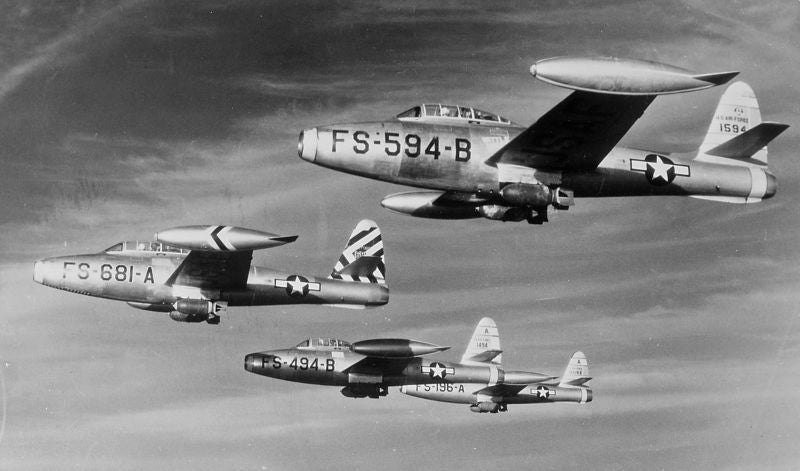
US Air Force F-84E Thunderjets from the 474th Fighter-Bomber Wing over Korea in 1952 (US Air Force)
February 28, 1946 – The first flight of the Republic F-84 Thunderjet. The history of !!!error: Indecipherable SUB-paragraph formatting!!! begins with !!!error: Indecipherable SUB-paragraph formatting!!! , a WWI veteran and émigré from Russia who started an airplane factory in the US that bore his name. True to his Russian roots, he hired a number of designers from his home country, one of whom was !!!error: Indecipherable SUB-paragraph formatting!!! , a native of Tbilisi, Georgia. When Seversky was forced out as the head of the Seversky Aero Company in 1939, the company reorganized as Republic Aviation. But Kartveli stayed on and became the company’s chief engineer and designed the !!!error: Indecipherable SUB-paragraph formatting!!! , arguably one of the best fighter-bombers of WWII.
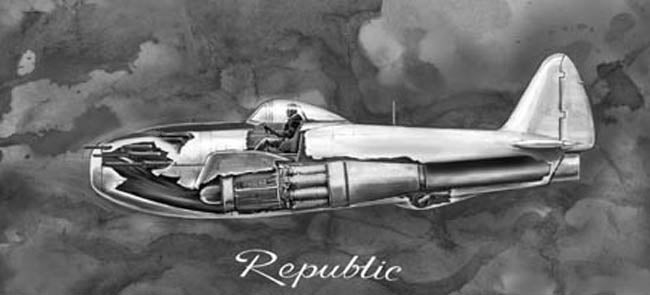
Before the development of the Thunderjet, Republic first considered placing a jet engine in a P-47 Thunderbolt (Author unknown)
By 1944, Kartveli had begun initial design work on an aircraft that would be powered by the new !!!error: Indecipherable SUB-paragraph formatting!!! which had been pioneered separately by !!!error: Indecipherable SUB-paragraph formatting!!! in England and !!!error: Indecipherable SUB-paragraph formatting!!! in Germany. At first, Kartveli experimented with putting the engine into the fuselage of a P-47, but it proved too bulky, and the concept was abandoned. On September 11, 1944, the US Army Air Forces issued a requirement for a new day fighter powered by the !!!error: Indecipherable SUB-paragraph formatting!!! axial flow turbojet, a much slimmer engine that was more suited to being placed inside the fuselage of a slender jet. The new fighter was required to have a top speed of 600 mph and to be armed with either six .50 caliber or four .60 caliber machine guns.
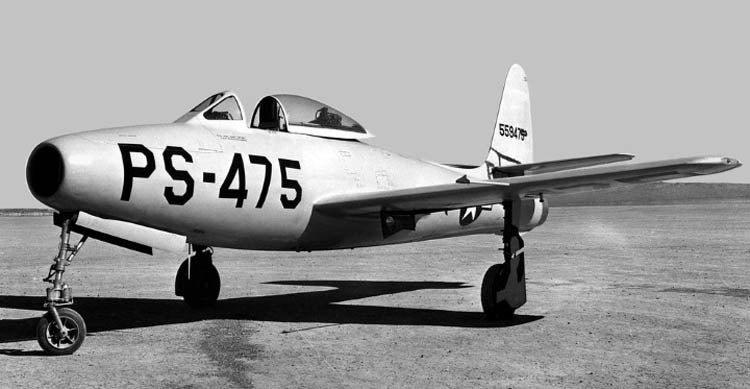
An XP-84 Thunderjet prototype, one of two built before work began on preproduction YF-84s (US Air Force)
The USAAF ordered three prototypes from Republic, the first of which took its maiden flight on February 28, 1946. The second prototype flew six months later and immediately established a new world record speed of 611 mph. Instead of building a third prototype, the Air Force purchased sixteen preproduction YF-84s for testing. Production began in earnest in 1947 with the F-84B, which was fitted with wingtip fuel tanks for increased range and an ejection seat. The Air Force received the first Thunderjets in 1947, but teething problems plagued the new fighter. Operational speeds were limited to Mach 0.8 due to problems with !!!error: Indecipherable SUB-paragraph formatting!!! , and acceleration was limited to 5.5g due to wrinkling of the fuselage skin. These problems were exacerbated by a chronic shortage of parts for the Allison engines, and the entire F-84B fleet was grounded in 1948 because of structural failures. The situation looked grim the the Thunderjet, and there was talk of canceling the entire program. Fortunately for Republic, many of the structural problems were already being addressed in the F-84D, which featured thicker, stronger wings, an upgraded and winterized fuel system, and the addition of small wings to the wingtip fuel tanks to eliminate stress on the wings during high G maneuvers.
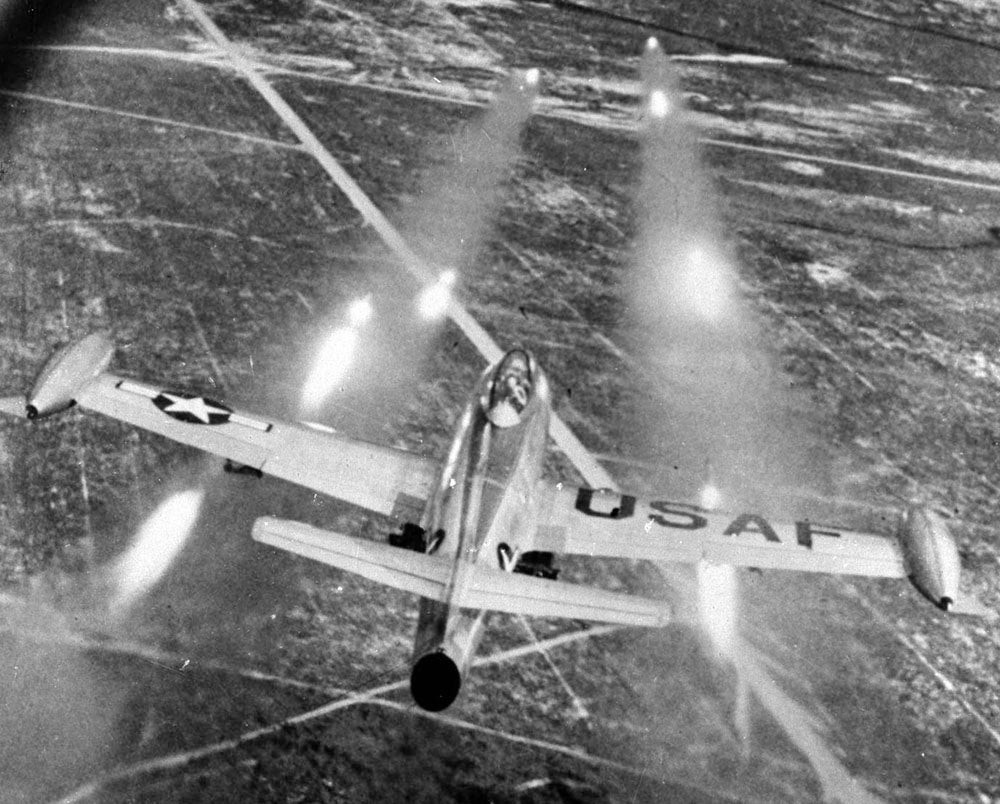
An F-84E unleashes a salvo of rockets on a ground target (US Air Force)
Despite its initial shortcomings, the F-84 served with distinction in the Korean War. Thunderjets were used as bomber escorts, and though it was outmatched by the Russian-built swept-wing !!!error: Indecipherable SUB-paragraph formatting!!! , the F-84 scored its first air-to-air victory in 1951, though two other Thunderjets were lost in the encounter. Ultimately, F-84 pilots claimed victories over eight MiG-15s over the course of 86,408 sorties. Armed with bombs and rockets to supplement its machine guns, the Thunderjet became a potent ground attack aircraft, claiming 60% of all ground targets destroyed during the war and dropping 55,586 tons of bombs.
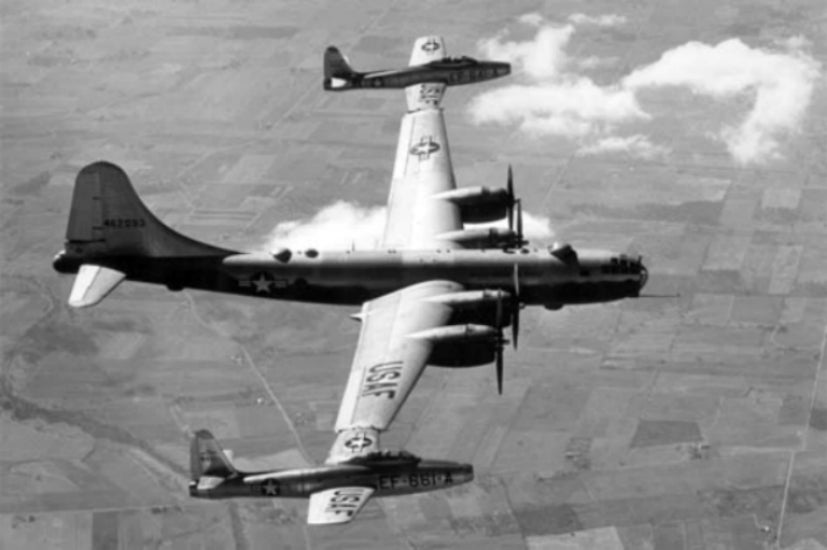
A Boeing ETB-29A Superforterss transports two Republic EF-84D Thunderjets as part of Project Tip-Tow (US Air Force)
The F-84 was also the first American fighter to be refueled in midair, and modified Thunderjets were used as part of the !!!error: Indecipherable SUB-paragraph formatting!!! (Fighter Conveyor) which explored the use of large bombers to ferry escort fighters attached at the wings or slung beneath the fuselage. The Thunderjet was widely exported to America’s allies, and it was also the first aircraft flown by the !!!error: Indecipherable SUB-paragraph formatting!!! demonstration team from 1953-1955. Just over 7,500 Thunderjets of all variants were produced, and its basic design served as the foundation for the swept-wing !!!error: Indecipherable SUB-paragraph formatting!!! and RF-84F Thunderflash. With the advent of swept-wing fighters and the rapid pace of aircraft development, the Thunderjet was retired from frontline Air Force service by the mid-1960s.
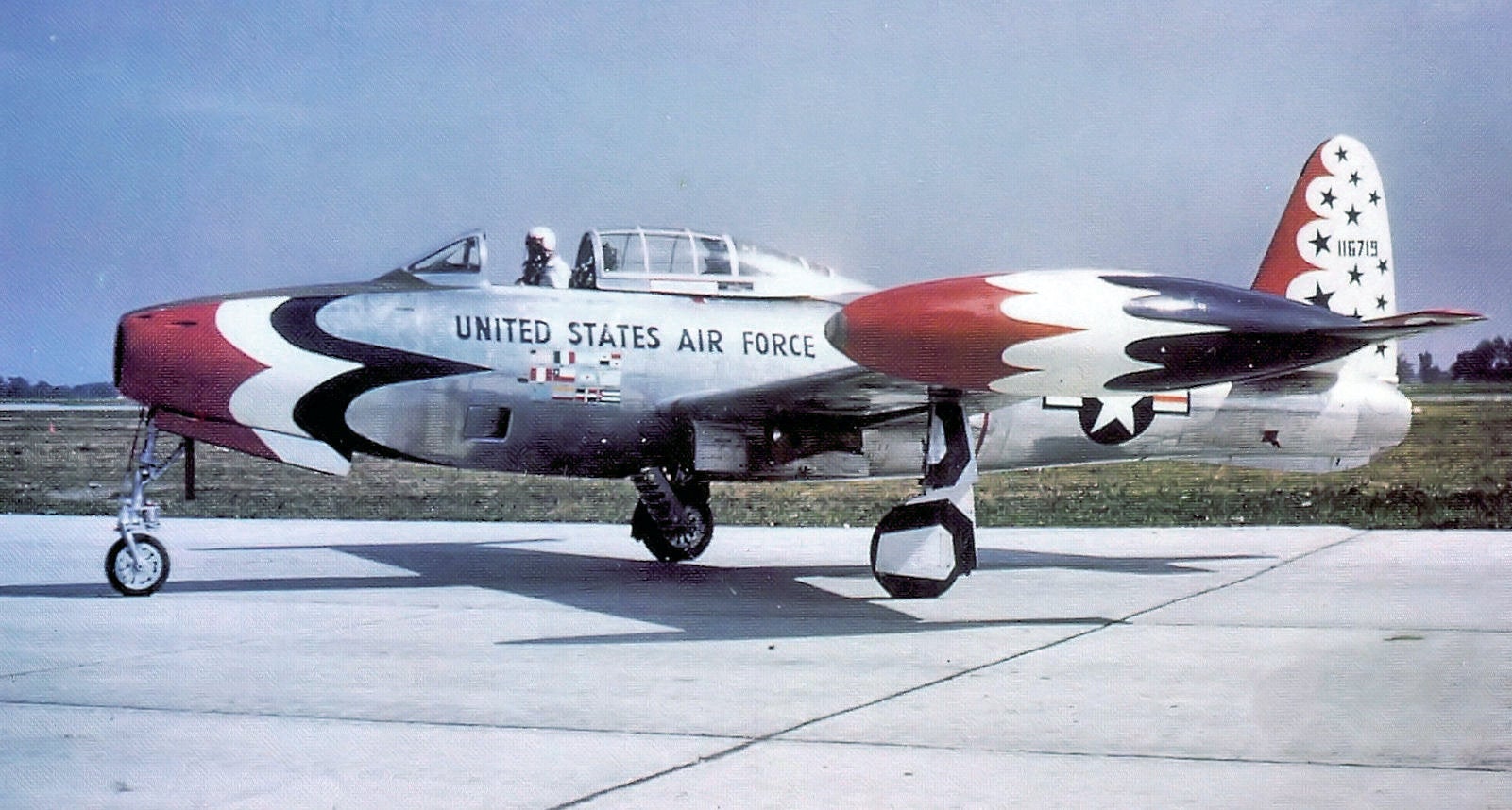
An F-84G of the USAF Thunderbirds. The Thunderbirds flew the Thunderjet from 1953-1955. (US Air Force)
!!! UNKNOWN CONTENT TYPE !!!
!!! UNKNOWN CONTENT TYPE !!!
Short Takeoff
!!! UNKNOWN CONTENT TYPE !!!
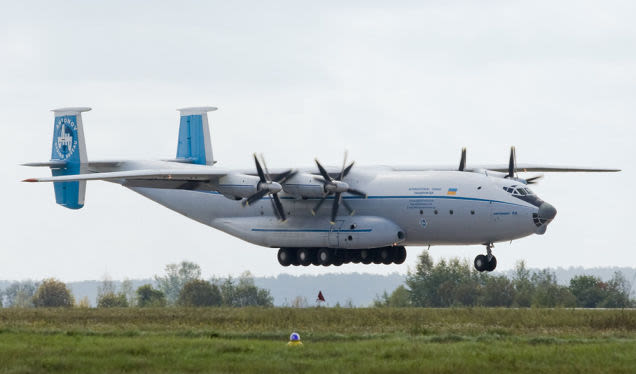 !!!CAPTION ERROR: MAY BE MULTI-LINE OR CONTAIN LINK!!!
!!!CAPTION ERROR: MAY BE MULTI-LINE OR CONTAIN LINK!!!
February 27, 1965 – The first flight of the Antonov An-22
Antei
,
a four-engine cargo and transport aircraft and the world’s largest turboprop-powered aircraft. The An-22, NATO reporting name
Cock
, is also the first wide-body aircraft developed by the Soviet Union. The An-22 was developed as a strategic airlifter, specifically to deliver airborne troops and their armored vehicles. The An-22 is powered by four
!!!error: Indecipherable SUB-paragraph formatting!!!
turboprops turning contra-rotating propellors and can carry 290 passengers or 80,000 pounds of payload while operating from rough or unimproved airstrips. The An-22 was introduced in 1967 and remains in active service, though it is gradually being replaced by the jet-powered
!!!error: Indecipherable SUB-paragraph formatting!!!
.
!!! UNKNOWN CONTENT TYPE !!!
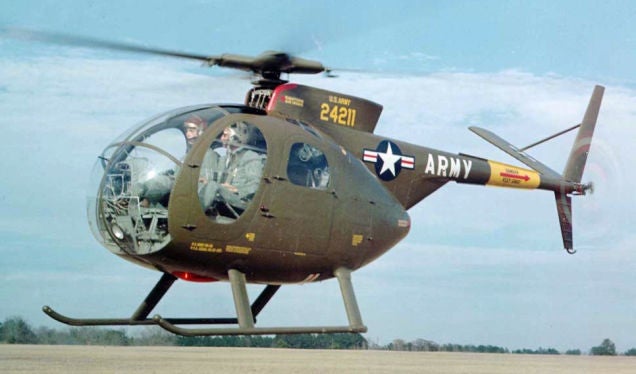
(US Army)
February 27, 1963 – The first flight of the Hughes OH-6 Cayuse, a small helicopter used by the US Army for personnel transport, escort, attack missions, and observation. Developed from a 1960 US Army request for a !!!error: Indecipherable SUB-paragraph formatting!!! (LOH, commonly called “Loach”), the Cayuse was the winner in a competition between Hughes and Fairchild-Hiller, with Hughes awarded a production contract in 1965. When all fixed-wing aircraft were transferred to the US Air Force in 1964, the Cayuse replaced the !!!error: Indecipherable SUB-paragraph formatting!!! as the Army’s primary reconnaissance aircraft in Vietnam. The OH-6 also set 23 world records for speed, endurance and time to climb and, along with its civilian counterpart, the MD 500, remains in production.
!!! UNKNOWN CONTENT TYPE !!!
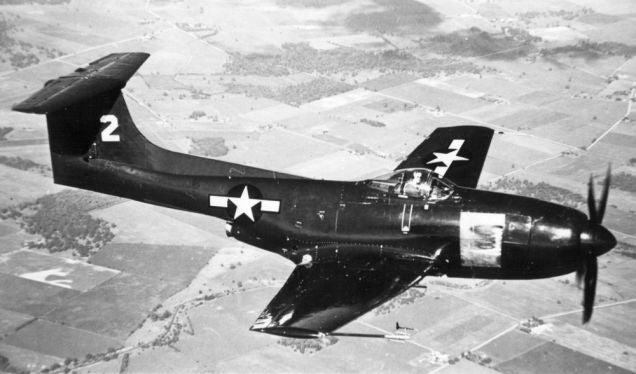
(US Navy)
February 27, 1945 – The first flight of the Curtiss XF15C, a prototype mixed-propulsion US Navy fighter that was powered by a !!!error: Indecipherable SUB-paragraph formatting!!! 18-cylinder radial in the front (the same engine used in the !!!error: Indecipherable SUB-paragraph formatting!!! , !!!error: Indecipherable SUB-paragraph formatting!!! and !!!error: Indecipherable SUB-paragraph formatting!!! ) and an !!!error: Indecipherable SUB-paragraph formatting!!! in the rear (the J36 was an American license-built version of the British Goblin turbojet). Three prototypes were built, and while the arrangement showed promise, rapid advances in jet engine development caused the Navy to lose interest in the mixed-power concept and the project was canceled in 1946. The first airframe was lost to a landing accident, the second was scrapped, and the third is part of the collection of the Hickory Aviation Museum in Hickory, North Carolina.
!!! UNKNOWN CONTENT TYPE !!!
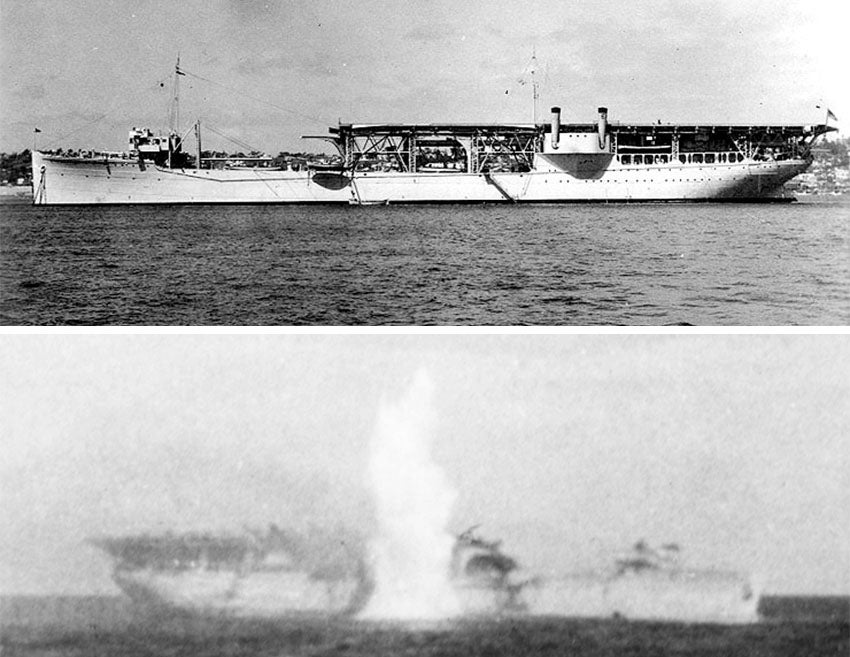 !!!CAPTION ERROR: MAY BE MULTI-LINE OR CONTAIN LINK!!!
!!!CAPTION ERROR: MAY BE MULTI-LINE OR CONTAIN LINK!!!
February 27, 1942 – USS Langley (CV-1, AV-1), the United States’ first aircraft carrier, is attacked by Japanese aircraft and scuttled off the southern coast of Java. !!!error: Indecipherable SUB-paragraph formatting!!! was commissioned in 1922 as America’s first aircraft carrier (CV-1), and was recommissioned in 1937 as a seaplane tender (AV-1). At the outbreak of WWII, Langley was stationed off the Philippines, but steamed to Australia to keep ahead of the Japanese advance and to pick up a load of aircraft and pilots. Just before noon on February 27, Langley and her two escort ships came under attack from a flight of 16 Japanese !!!error: Indecipherable SUB-paragraph formatting!!! “Betty” bombers and was struck by five bombs with the loss of 16 crewmen. Langley went dead in the water and the crew abandoned ship. To prevent the ship from falling into Japanese hands, the escorts targeted her with 4-inch shells and two torpedoes, sending the crippled ship to the bottom. The rescued crew were transferred to the escort ship !!!error: Indecipherable SUB-paragraph formatting!!! (DD-219) and cargo ship !!!error: Indecipherable SUB-paragraph formatting!!! !!!error: Indecipherable SUB-paragraph formatting!!! (AO-6), but most were lost when those ships were sunk two days later while returning to Australia.
!!! UNKNOWN CONTENT TYPE !!!
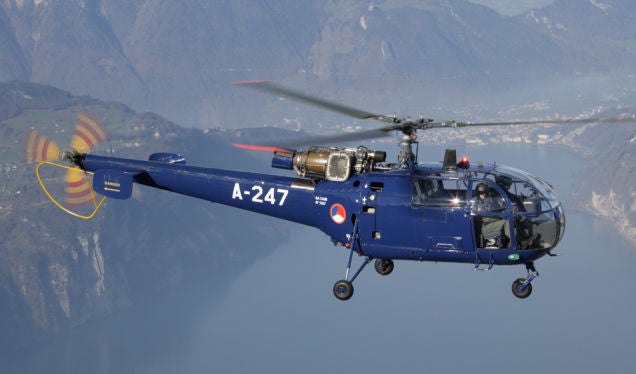 !!!CAPTION ERROR: MAY BE MULTI-LINE OR CONTAIN LINK!!!
!!!CAPTION ERROR: MAY BE MULTI-LINE OR CONTAIN LINK!!!
February 28, 1959 – The first flight of the Aérospatiale Alouette III, a single-engine utility helicopter developed by !!!error: Indecipherable SUB-paragraph formatting!!! as an enlarged variant of the earlier !!!error: Indecipherable SUB-paragraph formatting!!! . Principal production of the Alouette III was performed by !!!error: Indecipherable SUB-paragraph formatting!!! , and the helicopter was also built under license in India and Romania. Over 2,000 copies of the Alouette III were produced between 1961-1985, and it remains in production in India. With a crew of two pilots, the Alouette III has space for five passengers and is used primarily for civilian or troop transport and search and rescue (SAR), though a number of variants were developed into helicopter gunships by Romania and South Africa.
!!! UNKNOWN CONTENT TYPE !!!
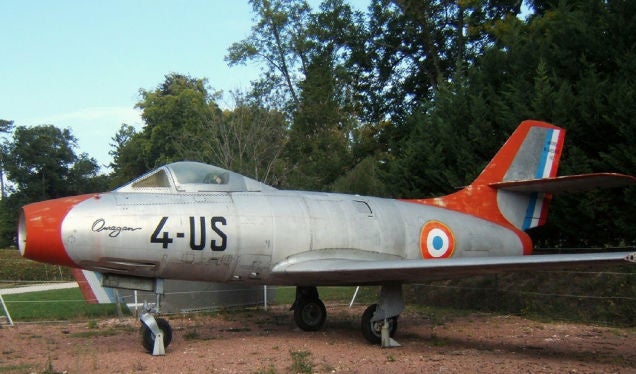 !!!CAPTION ERROR: MAY BE MULTI-LINE OR CONTAIN LINK!!!
!!!CAPTION ERROR: MAY BE MULTI-LINE OR CONTAIN LINK!!!
February 28, 1949 – The first flight of the Dassault Ouragan, the first French-designed jet fighter to enter production. As an occupied country during WWII, France was largely left out of the rapid development of aircraft. Designer !!!error: Indecipherable SUB-paragraph formatting!!! and the Ouragan (Hurricane) were instrumental in reestablishing France as a player in the world of modern aircraft design and production. The Ouragan was powered by a single !!!error: Indecipherable SUB-paragraph formatting!!! turbojet, had a top speed of 584 mph, and was armed with four 20mm cannons. It could also carry up to 16 rockets or 5,000 pounds of bombs. When it entered service in 1941, the Ouragan replaced the !!!error: Indecipherable SUB-paragraph formatting!!! with the Armée de l’Air, and also served in India, Israel and El Salvador.
!!! UNKNOWN CONTENT TYPE !!!
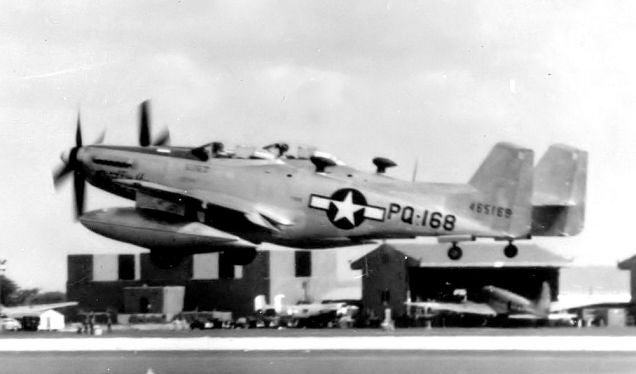
(US Air Force)
February 28, 1947 – The crew of a North American F-82 Twin Mustang sets a world record for the longest and fastest flight of a piston-powered fighter.
To demonstrate the long distance capabilities of the F-82, US Army Air Forces pilot
!!!error: Indecipherable SUB-paragraph formatting!!!
, with co-pilot Lieutenant John Ard, flew from Hickam Field in Hawaii to La Guardia Field in New York City in a
!!!error: Indecipherable SUB-paragraph formatting!!!
nicknamed
Betty Jo
(they took off on the 27th, but landed on the 28th). The nonstop flight, without aerial refueling, lasted just over 14 hours at an average speed of 342 mph. Thacker’s and Ard’s flight set the world record for the longest non-stop flight by a piston-powered fighter, as well as the fastest non-stop flight by piston-powered aircraft from Hawaii to New York City, both records that still stand to this day. Betty Jo is now on display at the National Museum of the United States Air Force.
!!! UNKNOWN CONTENT TYPE !!!
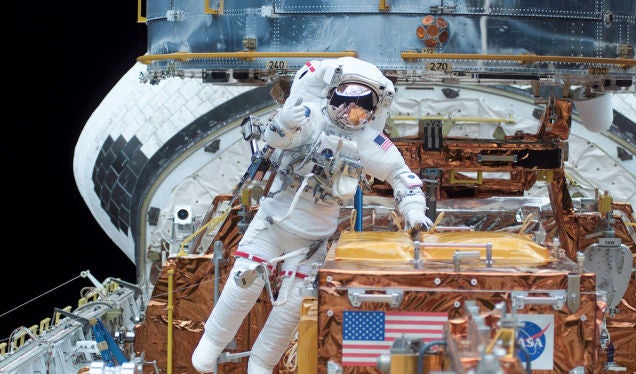
(NASA)
March 1, 2002 – The launch of the Space Shuttle Columbia on STS-109, the last successful mission of Columbia . STS-109 marked the 27th flight of !!!error: Indecipherable SUB-paragraph formatting!!! and the 108th mission of the !!!error: Indecipherable SUB-paragraph formatting!!! . The flight was the first for Columbia after undergoing a 2.5 year modification program, and the mission was highlighted by the installation of a new camera, new solar arrays, and a new power unit on the !!!error: Indecipherable SUB-paragraph formatting!!! (HST), the third of five Hubble servicing missions. STS-109 was also the final successful flight of Columbia . The orbiter was !!!error: Indecipherable SUB-paragraph formatting!!! on February 1, 2003 during !!!error: Indecipherable SUB-paragraph formatting!!! when it broke apart while reentering Earth’s atmosphere after a piece of insulation foam damaged the wing during launch. Columbia burned up in the atmosphere with the loss of all seven astronauts.
!!! UNKNOWN CONTENT TYPE !!!
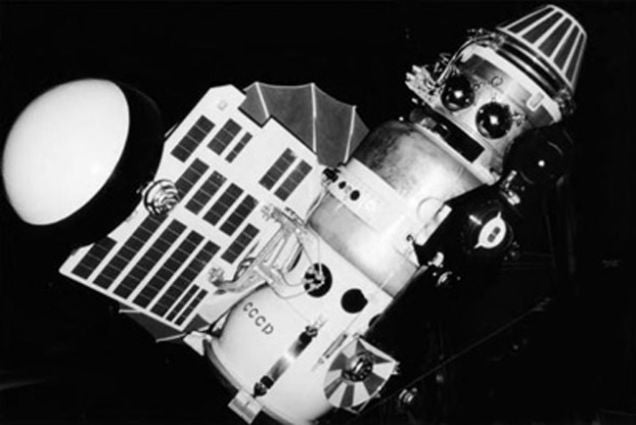
(Author unknown)
March 1, 1966 – The Soviet space probe Venera 3 crash lands on Venus. The Soviet !!!error: Indecipherable SUB-paragraph formatting!!! was a series of space probes launched between 1961 and 1984 to study the planet Venus. Venera 3 (the lander is the small, cone-shaped portion at the top of the spacecraft) was launched from !!!error: Indecipherable SUB-paragraph formatting!!! , Kazakhstan on November 16, 1965, and its mission was to land on the surface of our solar system’s second planet to study magnetic fields, cosmic rays, solar plasma and micrometeorites. Unfortunately, radio contact with the probe was lost during landing, and the spacecraft most likely crashed. Nevertheless, the probe has the distinction of being the first manmade spacecraft to impact the surface of another planet.
!!! UNKNOWN CONTENT TYPE !!!

(US Air Force)
March 1, 1948 – The first flight of the Curtiss-Wright XF-87 Blackhawk, a prototype all-weather fighter/interceptor developed by the !!!error: Indecipherable SUB-paragraph formatting!!! as a successor to the !!!error: Indecipherable SUB-paragraph formatting!!! . Curtiss-Wright initially proposed a twin-engine jet fighter, but the Air Force rejected their proposal because the engines weren’t powerful enough for the 32,000-pound airframe. So Curtiss-Wright altered their plans to meet the new Army requirement and added two more engines. Flight tests showed the Blackhawk to be an acceptable aircraft, though the first engines were underpowered, and the Blackhawk suffered from buffeting that was never entirely solved. Following an upgrade to more powerful !!!error: Indecipherable SUB-paragraph formatting!!! turbojets, the XF-87 showed promise, and the USAAF placed orders for 57 aircraft, but the Blackhawk ultimately lost out to the !!!error: Indecipherable SUB-paragraph formatting!!! . Only two prototypes were built, and the loss of the Army Air Forces contract led to the demise of Curtiss-Wright.
!!! UNKNOWN CONTENT TYPE !!!
Connecting Flights
!!! UNKNOWN CONTENT TYPE !!!
!!! UNKNOWN CONTENT TYPE !!!
!!! UNKNOWN CONTENT TYPE !!!
!!! UNKNOWN CONTENT TYPE !!!
!!! UNKNOWN CONTENT TYPE !!!
If you enjoy these Aviation History posts, please let me know in the comments. And if you missed any of the past articles, you can find them all at
!!!error: Indecipherable SUB-paragraph formatting!!!
. You can also find more stories about aviation, aviators and airplane oddities at
!!!error: Indecipherable SUB-paragraph formatting!!!
.
!!! UNKNOWN CONTENT TYPE !!!
 For Sweden
> ttyymmnn
For Sweden
> ttyymmnn
03/01/2019 at 12:41 |
|
Kelly : What if we pretend that flow separation exists?
Lockheed aerodynamics :

 Chariotoflove
> ttyymmnn
Chariotoflove
> ttyymmnn
03/01/2019 at 13:15 |
|
Of all the cool names that have ever been used for planes, I think Starfighter is the absolute best.
 facw
> ttyymmnn
facw
> ttyymmnn
03/01/2019 at 13:21 |
|
Speaking of the Venera program, Kosmos 482 (a sister probe to Venera 8, and which would have been named Venera 9 had it reached Venus) is expected to finally reenter Earth’s atmosphere later this year: Failed 1970s Venus Probe Could Crash to Earth This Year
 ttyymmnn
> facw
ttyymmnn
> facw
03/01/2019 at 13:23 |
|
I’ll have to dig my Skylab helmet out of storage.
 facw
> Chariotoflove
facw
> Chariotoflove
03/01/2019 at 14:38 |
|
And a cool plane got it.
 Chariotoflove
> facw
Chariotoflove
> facw
03/01/2019 at 15:00 |
|
Yep. Thank goodness they didn’t waste it on a dud.
 f86sabre
> ttyymmnn
f86sabre
> ttyymmnn
03/01/2019 at 18:12 |
|
Johnson is just such an icon. The things he helped make happen, when he made them happen, is just mind blowing.
 gmporschenut also a fan of hondas
> ttyymmnn
gmporschenut also a fan of hondas
> ttyymmnn
03/02/2019 at 16:58 |
|
“ NATO reporting name Cock”

 ttyymmnn
> gmporschenut also a fan of hondas
ttyymmnn
> gmporschenut also a fan of hondas
03/02/2019 at 17:28 |
|
https://oppositelock.kinja.com/wingspan-did-you-know-1821051165
 Only Vespas...
> ttyymmnn
Only Vespas...
> ttyymmnn
03/02/2019 at 22:25 |
|
The image of any man/woman in a high-performance aircraft in civvies is so unexpectedly awesome. Like Kelly in his F-104. Or the dude in the ball cap in this

B-47. It’s just so bad-assed. Look at what I drive....
 ttyymmnn
> Only Vespas...
ttyymmnn
> Only Vespas...
03/02/2019 at 22:35 |
|
What a job. Especially back in the day.